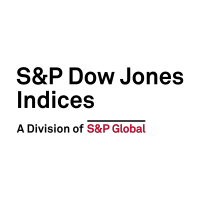Tag Archives: sectors
S&P DJI’s Global Islamic Equity Benchmarks Rose 13% in H1 2024, Outperforming Conventional Benchmarks
Global equities extended their upward trend into Q2 2024 on the back of sustained economic growth and moderating inflation. The S&P Global BMI posted a healthy 10.4% return in the first half of the year, led by the U.S where the S&P 500® had an impressive run with a 15.3% gain and new record highs….
- Categories Equities, Fixed Income, Thematics
- Other Tags
Frequent Flyers
Planes are interesting places, airborne aluminum tubes stuffed with strangers from all walks of life, including seatmates prodding with the proverbial ice-breaker, “So, what do you do?” Overhearing many such conversations, I’ve found complicated job descriptions elicit blank stares and subsequently lead to higher-level answers such as “Well, I’m in tech,” or “I work in…
- Categories Equities
- Other Tags
- Categories
- Equities
- Other Tags
S&P DJI’s Global Islamic Equity Benchmarks Rose 9% in the First Quarter, Extending Outperformance against Conventional Benchmarks
Global equities had a strong start to the year as economic resilience and diminishing recession fears boosted risky assets overall. The S&P Global BMI surged 7.8% in the first quarter, led by developed markets; notably, the S&P 500® finished the quarter up 10.6%, at a new record high. Shariah-compliant global benchmarks beat their conventional counterparts,…
- Categories Equities, Fixed Income, Thematics
- Other Tags
How Sector Neutrality Influences Risk/Return in S&P Dividend Aristocrats
What are the potential benefits of a sector neutral approach to S&P Dividend Aristocrats? S&P DJI’s Rupert Watts and State Street Global Advisors’ Colin Ireland explore the construction and range of potential applications for the S&P Sector-Neutral High Yield Dividend Aristocrats.
- Categories Equities
-
Other Tags
diversification, ETFs, high yield dividend growers, indexing, large-cap equities, Mid-cap equities, quality dividend growers, Rupert Watts, S&P 1500, S&P 400, S&P 500, S&P 600, S&P Composite 1500, S&P Dividend Aristocrats, S&P Sector-Neutral High Yield Dividend Aristocrats, sector-neutrality, small-cap equities, U.S. Equities
- Categories
- Equities
- Other Tags
- diversification, ETFs, high yield dividend growers, indexing, large-cap equities, Mid-cap equities, quality dividend growers, Rupert Watts, S&P 1500, S&P 400, S&P 500, S&P 600, S&P Composite 1500, S&P Dividend Aristocrats, S&P Sector-Neutral High Yield Dividend Aristocrats, sector-neutrality, small-cap equities, U.S. Equities
The February 2024 Rebalance of the S&P 500 Low Volatility Index
Since the previous rebalance for the S&P 500® Low Volatility Index on Nov. 17, 2023, and its most recent on Feb. 16, 2024, the S&P 500 delivered a stunning 11.3% return. During this period, the S&P 500 Low Volatility Index was up 5.3%, strong by historical standards, albeit underperforming the S&P 500. As has been the…
- Categories Factors
- Other Tags
- Categories
- Factors
- Other Tags
U.S. Sector Relevance to China
Chinese investors tend to exhibit high exposures to domestic equities. Incorporating U.S. equities could help Chinese investors diversify their strategies and alleviate home-country bias. For example, the S&P 500® may be relevant for exposure and sensitivity to the U.S. economy. Additionally, market participants seeking to offset domestic equity biases or express tactical views may wish…
- Categories Equities
- Other Tags
S&P DJI’s Global Islamic Equity Benchmarks Surged Nearly 12% in the Final Quarter, Outperforming Conventional Benchmarks in 2023
Global equities witnessed a strong Q4 2023 as slowing inflation and the potential for lower interest rates improved market sentiment drastically. The S&P Global BMI rallied 11.4% for the quarter, finishing the year with an impressive 21.9% return. Middle East and North Africa (MENA) equities rose 6.4% in Q4, as measured by the S&P Pan…
- Categories Equities, Fixed Income, Thematics
- Other Tags
The Relative Value of Insights
Many investors use the start of the year to make predictions for the upcoming year and to think about ways to express views on these themes. This undertaking is not guaranteed to add value: predicting the future is incredibly difficult and success requires correctly predicting both the drivers of future performance and the upcoming impact…
The November 2023 Rebalance of the S&P 500 Low Volatility Index
The S&P 500® continued its strong performance this year after posting a 9.8% gain in a span of less than three weeks from Oct. 30 to Nov. 17, 2023. During this period, the 10-year U.S. Treasury yield dropped approximately 45 bps1 and October’s year-over-year headline CPI inflation cooled to 3.2%.2 As Exhibit 1 shows, since…
- Categories Factors
- Other Tags
- Categories
- Factors
- Other Tags
Why Do U.S. Mid-Cap Equities Matter?
Take a deep dive into the S&P MidCap 400 as S&P DJI’s Hamish Preston and Sherifa Issifu explore what makes the S&P 400 relevant globally and the distinctive sector and risk/return characteristics of this slice of the U.S. equity market.
- Categories Equities
- Other Tags







